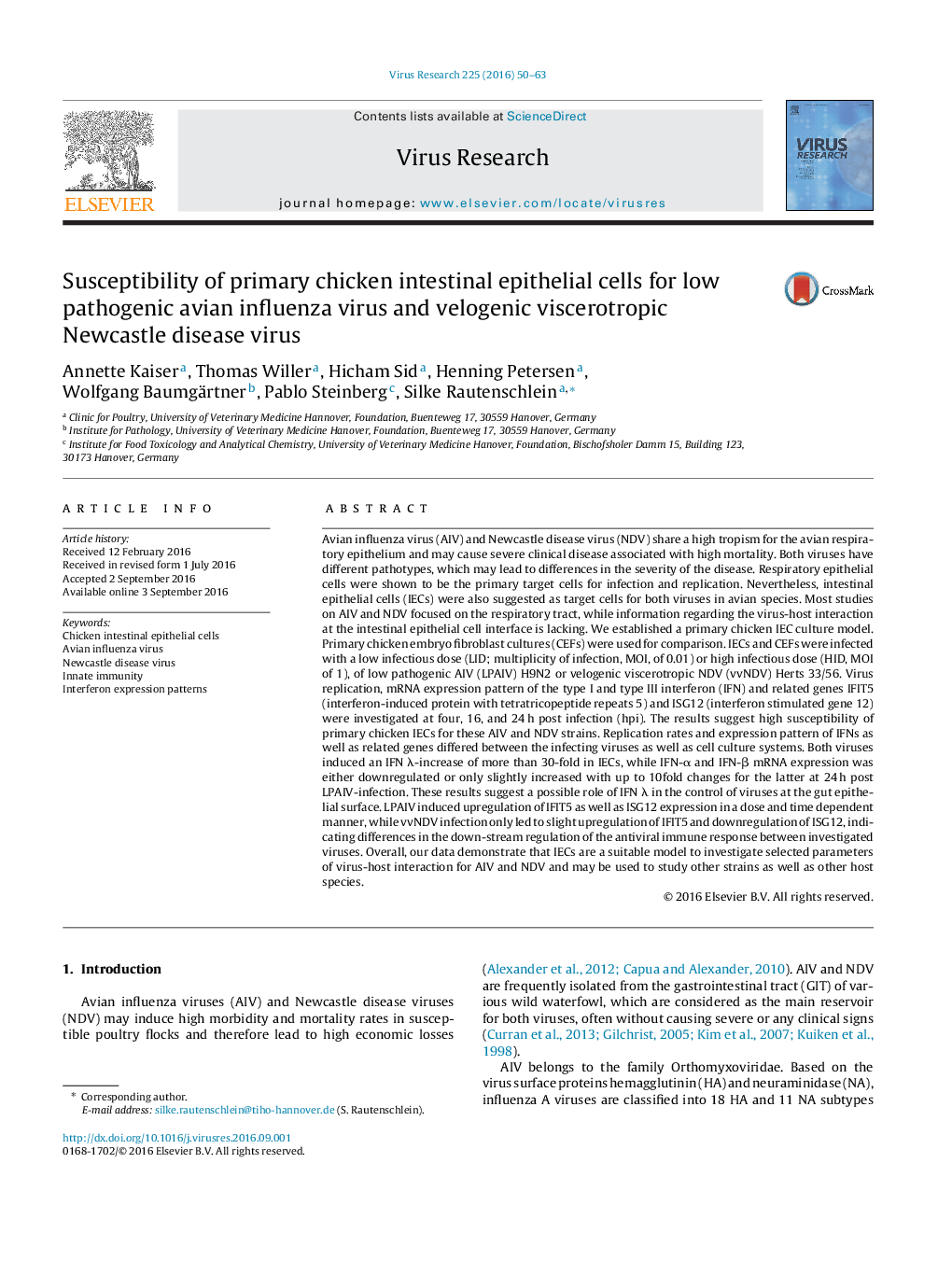| Article ID | Journal | Published Year | Pages | File Type |
|---|---|---|---|---|
| 3427809 | Virus Research | 2016 | 14 Pages |
•Primary duodenal chicken IEC culture are a suitable model for host-pathogen interaction.•Differences in IFN mRNA expression pattern between Newcastle disease virus and avian Influenza virus.•Significant upregulation of IFN λ after LPAIV and NDV-infection highlights its possible role as an antiviral cytokine in the gut.•Difference in mRNA expression of interferon stimulated genes IFIT5 and ISG12.
Avian influenza virus (AIV) and Newcastle disease virus (NDV) share a high tropism for the avian respiratory epithelium and may cause severe clinical disease associated with high mortality. Both viruses have different pathotypes, which may lead to differences in the severity of the disease. Respiratory epithelial cells were shown to be the primary target cells for infection and replication. Nevertheless, intestinal epithelial cells (IECs) were also suggested as target cells for both viruses in avian species. Most studies on AIV and NDV focused on the respiratory tract, while information regarding the virus-host interaction at the intestinal epithelial cell interface is lacking. We established a primary chicken IEC culture model. Primary chicken embryo fibroblast cultures (CEFs) were used for comparison. IECs and CEFs were infected with a low infectious dose (LID; multiplicity of infection, MOI, of 0.01) or high infectious dose (HID, MOI of 1), of low pathogenic AIV (LPAIV) H9N2 or velogenic viscerotropic NDV (vvNDV) Herts 33/56. Virus replication, mRNA expression pattern of the type I and type III interferon (IFN) and related genes IFIT5 (interferon-induced protein with tetratricopeptide repeats 5) and ISG12 (interferon stimulated gene 12) were investigated at four, 16, and 24 h post infection (hpi). The results suggest high susceptibility of primary chicken IECs for these AIV and NDV strains. Replication rates and expression pattern of IFNs as well as related genes differed between the infecting viruses as well as cell culture systems. Both viruses induced an IFN λ-increase of more than 30-fold in IECs, while IFN-α and IFN-β mRNA expression was either downregulated or only slightly increased with up to 10fold changes for the latter at 24 h post LPAIV-infection. These results suggest a possible role of IFN λ in the control of viruses at the gut epithelial surface. LPAIV induced upregulation of IFIT5 as well as ISG12 expression in a dose and time dependent manner, while vvNDV infection only led to slight upregulation of IFIT5 and downregulation of ISG12, indicating differences in the down-stream regulation of the antiviral immune response between investigated viruses. Overall, our data demonstrate that IECs are a suitable model to investigate selected parameters of virus-host interaction for AIV and NDV and may be used to study other strains as well as other host species.
